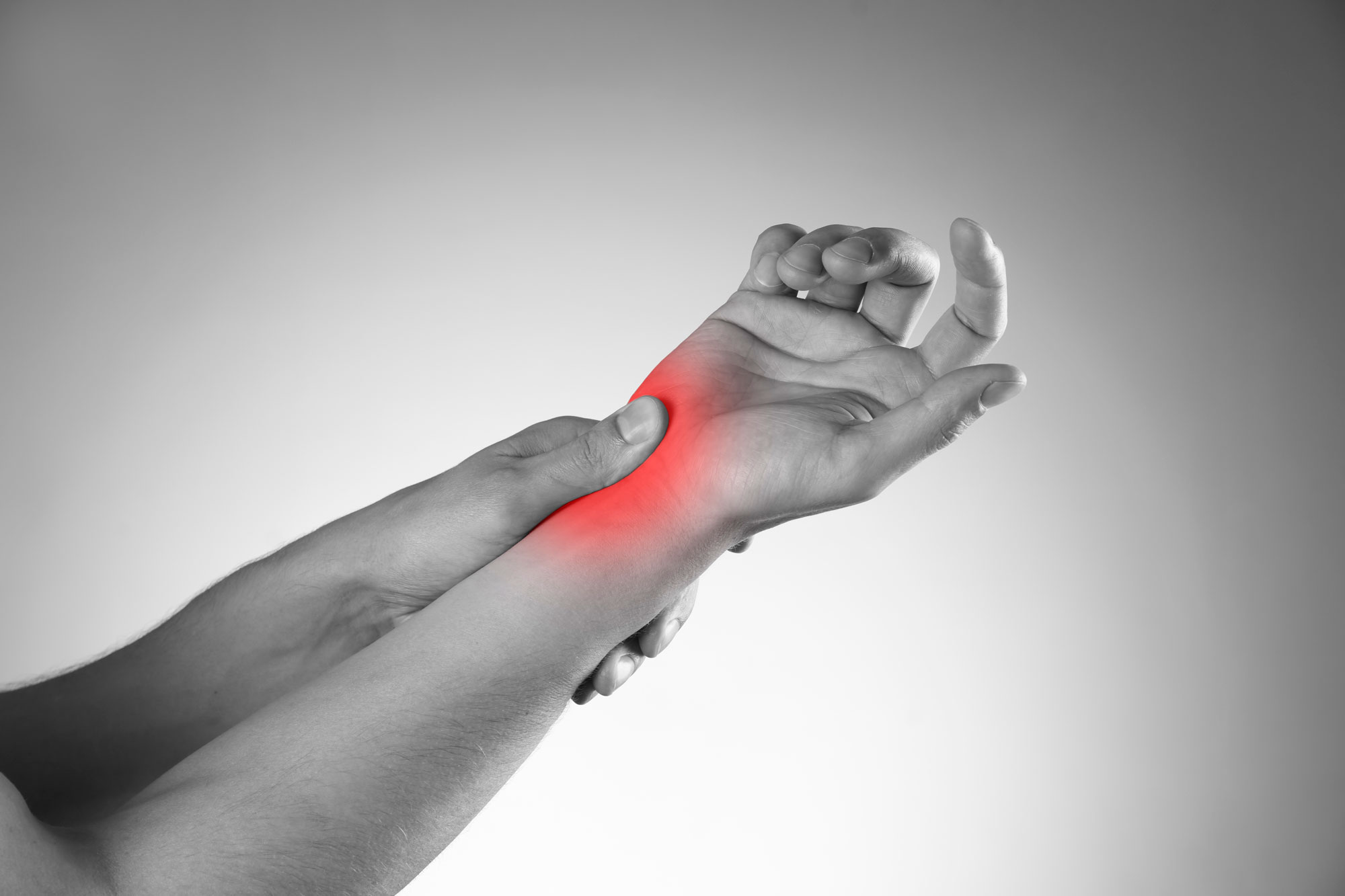Auto accidents can be jarring experiences, leaving us shaken and overwhelmed with emotions. Amidst the chaos and confusion that follows such incidents, it is crucial to remember that some injuries may not manifest immediately. While you may initially feel fine, latent symptoms of auto accident injuries can silently develop over time, causing discomfort and pain. This is why early diagnosis and treatment are of utmost importance, especially when it comes to seeking chiropractic care. In this blog post, we will delve into the significance of early intervention and shed light on how chiropractic care plays a vital role in identifying and treating latent auto accident injuries. By understanding the importance of timely care, you can take proactive steps towards your recovery and overall well-being.
Symptoms of Head Injury Can Be Latent
 One of the most concerning aspects of auto accidents is the potential for head injuries, which can have serious long-term consequences if left untreated. What makes head injuries particularly worrisome is that their symptoms may not be immediately apparent. While some individuals may experience immediate signs such as loss of consciousness or severe headaches, others may not notice any symptoms until days or even weeks after the accident. The latency of head injury symptoms can be attributed to various factors. The adrenaline rush and shock that often accompany an accident can mask the pain and discomfort initially, leading individuals to believe they have escaped unscathed. Additionally, the body’s natural response to trauma can cause a delay in the manifestation of symptoms as it focuses on immediate survival and protection. It is essential to be vigilant and aware of potential signs of a head injury, even if they don’t appear immediately after the accident. Some common latent symptoms of head injuries include:
One of the most concerning aspects of auto accidents is the potential for head injuries, which can have serious long-term consequences if left untreated. What makes head injuries particularly worrisome is that their symptoms may not be immediately apparent. While some individuals may experience immediate signs such as loss of consciousness or severe headaches, others may not notice any symptoms until days or even weeks after the accident. The latency of head injury symptoms can be attributed to various factors. The adrenaline rush and shock that often accompany an accident can mask the pain and discomfort initially, leading individuals to believe they have escaped unscathed. Additionally, the body’s natural response to trauma can cause a delay in the manifestation of symptoms as it focuses on immediate survival and protection. It is essential to be vigilant and aware of potential signs of a head injury, even if they don’t appear immediately after the accident. Some common latent symptoms of head injuries include:
- Headaches: Persistent or worsening headaches that develop days or weeks after the accident can indicate a head injury. These headaches may be accompanied by dizziness, sensitivity to light or noise, and difficulty concentrating.
- Cognitive difficulties: Problems with memory, concentration, and overall cognitive function can be indicative of a head injury. If you notice difficulties in processing information or find it challenging to perform tasks that were once routine, it’s important to seek medical attention.
- Mood changes: Auto accidents can disrupt the delicate balance of brain chemistry, leading to mood swings, irritability, anxiety, or depression. These emotional changes can arise weeks after the accident and may be linked to an undiagnosed head injury.
- Sleep disturbances: Head injuries can affect your sleep patterns. If you experience insomnia, excessive sleepiness, or disrupted sleep after an accident, it may be a sign of an underlying head injury.
- Sensory disturbances: Blurred vision, ringing in the ears (tinnitus), or changes in taste or smell can all be associated with head injuries. These symptoms may emerge gradually and should not be ignored.
Latency of Whiplash Symptoms
 Whiplash is one of the most common auto accident injuries, particularly in rear-end collisions. It occurs when the head and neck are forcefully jerked back and forth, straining the muscles, ligaments, and soft tissues of the neck. While some individuals may experience immediate symptoms of whiplash, it is not uncommon for symptoms to be latent and appear days or even weeks after the accident. The delayed onset of whiplash symptoms can be attributed to several factors. Firstly, the body’s response to trauma may initially mask the pain and discomfort associated with whiplash. Adrenaline, a hormone released during stressful situations like an accident, can temporarily suppress pain signals, giving individuals a false sense of being uninjured. Moreover, the nature of whiplash itself can contribute to the latency of symptoms. The strain and sprain of the neck’s soft tissues may take time to manifest noticeable symptoms as inflammation and swelling gradually develop. Micro-tears in the muscles and ligaments may also worsen over time, leading to increased pain and reduced mobility. Recognizing the latent symptoms of whiplash is crucial for timely diagnosis and effective treatment. Some common delayed symptoms of whiplash include:
Whiplash is one of the most common auto accident injuries, particularly in rear-end collisions. It occurs when the head and neck are forcefully jerked back and forth, straining the muscles, ligaments, and soft tissues of the neck. While some individuals may experience immediate symptoms of whiplash, it is not uncommon for symptoms to be latent and appear days or even weeks after the accident. The delayed onset of whiplash symptoms can be attributed to several factors. Firstly, the body’s response to trauma may initially mask the pain and discomfort associated with whiplash. Adrenaline, a hormone released during stressful situations like an accident, can temporarily suppress pain signals, giving individuals a false sense of being uninjured. Moreover, the nature of whiplash itself can contribute to the latency of symptoms. The strain and sprain of the neck’s soft tissues may take time to manifest noticeable symptoms as inflammation and swelling gradually develop. Micro-tears in the muscles and ligaments may also worsen over time, leading to increased pain and reduced mobility. Recognizing the latent symptoms of whiplash is crucial for timely diagnosis and effective treatment. Some common delayed symptoms of whiplash include:
- Neck pain and stiffness: These are hallmark symptoms of whiplash and often develop within 24 to 48 hours after the accident. The pain may worsen with movement and can radiate to the shoulders and upper back.
- Restricted range of motion: Whiplash can significantly limit the movement of the neck, making it difficult to turn the head from side to side or tilt it forward and backward. This restriction may become more noticeable as inflammation and muscle tightness increase.
- Headaches: Tension headaches, often originating from the base of the skull, can occur as a result of whiplash. These headaches may be persistent and worsen with prolonged periods of sitting or standing.
- Dizziness and vertigo: Some individuals may experience a sense of dizziness, lightheadedness, or vertigo due to the disruption of the neck’s normal alignment and the impact on the vestibular system.
- Cognitive difficulties: Whiplash can affect cognitive function, leading to difficulties with concentration, memory, and mental clarity. These symptoms may be subtle at first but can progressively worsen if left untreated.
It is essential to seek chiropractic care if you experience any of these symptoms, even if they emerge days or weeks after the accident. Chiropractors are trained to evaluate and diagnose whiplash injuries, utilizing various techniques to relieve pain, restore mobility, and promote healing.
Musculoskeletal Issues
 Auto accidents can result in a wide range of musculoskeletal injuries, affecting the bones, muscles, ligaments, and joints of the body. While some musculoskeletal injuries may be immediately apparent following an accident, others can have a latent onset, with symptoms gradually appearing over time. It is important to understand the potential musculoskeletal issues that can arise and the significance of early diagnosis and chiropractic treatment.
Auto accidents can result in a wide range of musculoskeletal injuries, affecting the bones, muscles, ligaments, and joints of the body. While some musculoskeletal injuries may be immediately apparent following an accident, others can have a latent onset, with symptoms gradually appearing over time. It is important to understand the potential musculoskeletal issues that can arise and the significance of early diagnosis and chiropractic treatment.
- Back and Spinal Injuries: The impact of an auto accident can place immense stress on the spine, leading to injuries such as herniated discs, vertebral fractures, or sprained ligaments. Symptoms may include back pain, limited mobility, radiating pain down the legs (sciatica), or numbness and tingling sensations.
- Shoulder and Neck Injuries: Whiplash is just one example of a neck injury that can occur during an auto accident. Additionally, the shoulders can experience trauma, resulting in strains, sprains, or dislocations. Symptoms may include pain, stiffness, reduced range of motion, and difficulty performing daily activities.
- Joint Injuries: The forceful impact of a collision can damage joints, leading to sprains, strains, or even dislocations. Commonly affected joints include the knees, hips, ankles, and wrists. These injuries may cause pain, swelling, instability, and difficulty bearing weight or using the affected joint.
- Soft Tissue Injuries: Muscles, tendons, and ligaments can suffer damage due to the sudden jolts and forces experienced during an auto accident. Strains, sprains, and tears can occur, resulting in pain, swelling, bruising, and limited mobility.
- Postural Issues: Auto accidents can disrupt the natural alignment of the body, leading to postural imbalances and abnormalities. These issues can contribute to chronic pain, muscle tension, headaches, and reduced overall functionality.
Early diagnosis and chiropractic intervention are crucial for musculoskeletal injuries, regardless of whether the symptoms appear immediately or have a latent onset. Chiropractors specialize in assessing and treating these injuries, utilizing a range of techniques such as spinal adjustments, soft tissue therapies, rehabilitative exercises, and postural corrections. By seeking chiropractic care promptly, you can address musculoskeletal issues, alleviate pain, restore proper function, and prevent long-term complications.
Effects of Chiropractic Care Following An Auto Accident
 After an auto accident, seeking chiropractic care can have a profound impact on your recovery and overall well-being. Chiropractors are trained to assess and treat musculoskeletal injuries, including those resulting from auto accidents. Let’s explore the beneficial effects of chiropractic care in the aftermath of an auto accident.
After an auto accident, seeking chiropractic care can have a profound impact on your recovery and overall well-being. Chiropractors are trained to assess and treat musculoskeletal injuries, including those resulting from auto accidents. Let’s explore the beneficial effects of chiropractic care in the aftermath of an auto accident.
- Pain Relief: Chiropractic adjustments and manipulations can help alleviate pain resulting from auto accident injuries. By realigning the spine and restoring proper joint function, chiropractors can reduce nerve compression, inflammation, and muscle tension, providing significant pain relief.
- Improved Mobility and Range of Motion: Auto accidents can cause stiffness, reduced flexibility, and limited range of motion in the affected areas. Chiropractic care incorporates various techniques, such as spinal adjustments, soft tissue therapies, and rehabilitative exercises, to restore mobility, flexibility, and overall functional capacity.
- Faster Recovery: Early intervention through chiropractic care can expedite the healing process. By addressing injuries promptly, chiropractors can help prevent the development of chronic pain and long-term complications, allowing for a faster and more complete recovery.
- Non-Invasive Approach: Chiropractic care focuses on natural, non-invasive methods to promote healing and recovery. Chiropractors utilize manual adjustments, physical therapies, and other non-surgical techniques to address auto accident injuries, minimizing the need for invasive procedures or medications.
- Long-Term Wellness: Chiropractic care extends beyond symptom relief. Chiropractors emphasize the importance of overall wellness and preventive care. By addressing the root causes of injuries, promoting proper spinal alignment, and providing guidance on exercise, nutrition, and lifestyle modifications, chiropractors help patients achieve long-term wellness and reduce the risk of future injuries.
- Holistic Approach: Chiropractic care takes a holistic approach to healing, recognizing the interconnectedness of the body and its systems. Chiropractors consider not only the physical aspects of injuries but also their impact on mental well-being and overall quality of life. They may incorporate complementary therapies such as massage, acupuncture, or nutritional counseling to support the healing process.
- Documentation for Insurance Claims: Seeking chiropractic care following an auto accident ensures that your injuries and treatments are documented by a qualified healthcare professional. This documentation can be invaluable when filing insurance claims or pursuing legal action related to the accident.
By consulting with a chiropractor experienced in auto accident injuries, you can receive personalized care to address your unique situation and optimize your recovery.

